Pierre Gasly in Ayrton Senna’s first Toleman: Always meet your heroes
It’s 40 years since Senna arrived in F1. James Elson joins Pierre Gasly as the Alpine driver takes Ayrton’s first Toleman on the track

Jakob Ebrey
The tension’s almost unbearable as a chilling breeze sweeps down the old Silverstone pitlane. Will it, won’t it? Silence descends for a second, and the atmosphere ratchets up one more notch, before being brutally shattered: an 800bhp turbo beast roars into life.
The machine in front of us is the Toleman TG183B – Ayrton Senna’s first grand prix car. We’re here to see it run today, as Sky F1 shoots a tribute film signifying 30 years since the F1 legend’s death to air over the Emilia-Romagna race weekend. It’s a precursor to the car joining a bumper Senna demonstration at this summer’s Silverstone Festival.
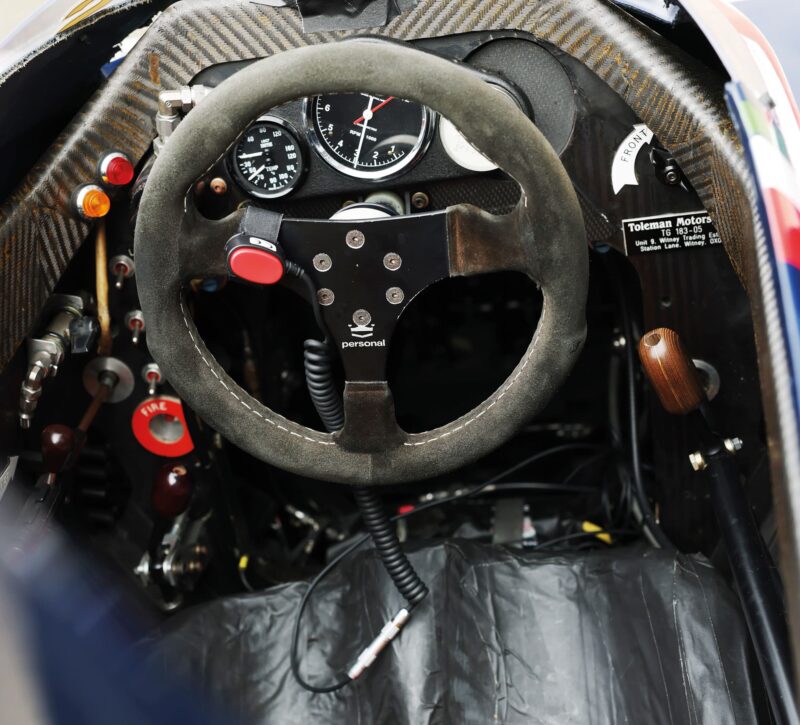
No paddle shift
Jakob Ebrey
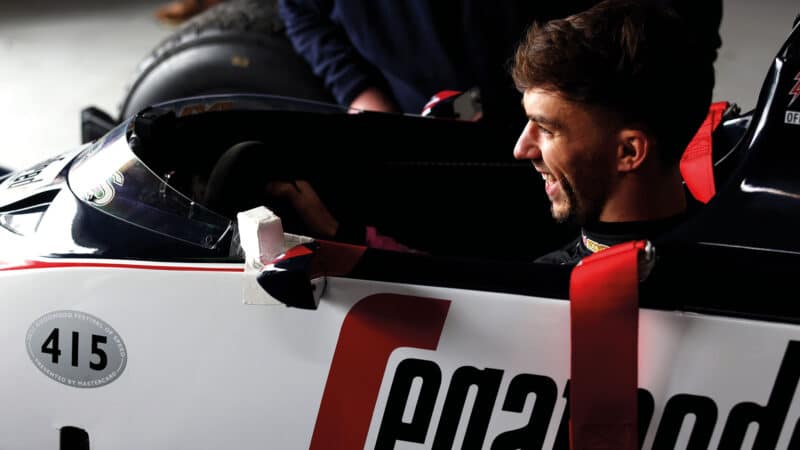
“Stoked” Pierre Gasly
Jakob Ebrey
Fears allayed that the 1980s monster might not stir, the man sourced to get behind the wheel is nothing less than a bona fide Senna fanatic – grand prix race winner and current Alpine driver Pierre Gasly.
“I’m so stoked,” he says beforehand, clutching his special-edition Senna crash helmet. “I get the chance to drive this beautiful piece of engineering.”
The future three-time world champion, already a man to watch when he made his 1984 F1 debut, first raced the TG183B in anger at his home race in Rio de Janeiro, before scoring a first world championship point next time out in South Africa, and another at the following race in Zolder. In historic racing terms, this is a highly significant car.
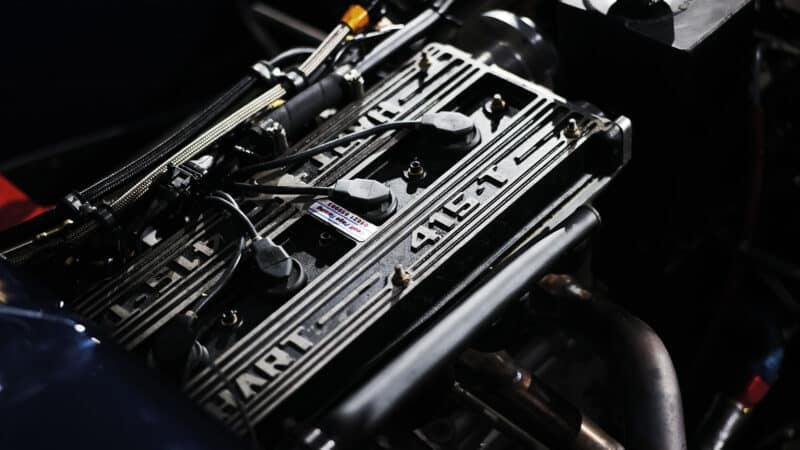
1.5-litre Hart 415T gives 800bhp
Jakob Ebrey
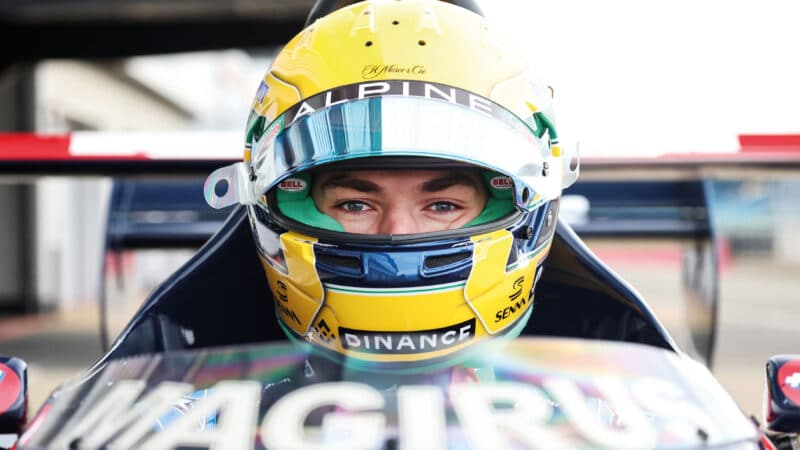
Gasly proudly sports the Senna-style helmet.
Jakob Ebrey
Also making his grand prix bow for Tyrrell that Brazil weekend was Senna’s British F3 archrival from the previous season, Martin Brundle. More than a little au fait with slightly unwieldy turbo grand prix cars, the Le Mans winner, F1 veteran and broadcaster is on-hand – along with Sky presenter and racer Naomi Schiff – to give Gasly a few pointers, while key Toleman figures are also present: team manager Alex Hawkridge, press man Chris Witty and mechanic Barney Drew-Smythe.
This track test has an added poignancy in that team founder Ted Toleman died in April, highlighting the impact his small band of racers had on F1, going from serial DNQ-ers to podium finishers in just four seasons – not to mention giving a debut to the driver many view as racing’s greatest. Helping Senna make that first leap into F1 was chief designer Rory Byrne as well as engineers John Gentry and Pat Symonds – a stellar line-up.
“There was no surprise with Ayrton’s speed but his competitiveness was unbelievable”
It’s now 40 years since that landmark season, but the memory of Senna’s arresting presence and searing pace is still clear as day for the former Toleman charges.
Not only was the intense South American immediately at one with the car, he fitted in with the driven privateer outfit when hired as a replacement for Derek Warwick, the team’s talisman who had moved to Renault.
“It was going to be Rory’s decision effectively, and Ayrton tested at Donington with us after he’d already done so for Williams and McLaren,” says Witty.
“Ayrton and Rory immediately clicked. There was no telemetry then – the only interface to make the car go quicker was driver to engineer – and Rory was able to talk to him like he did with Warwick.
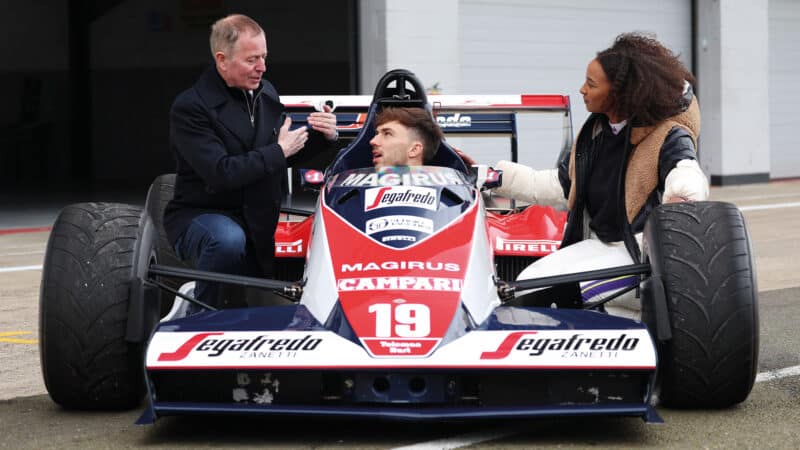
Tips from Martin Brundle for Gasly and Naomi Schiff
Jakob Ebrey
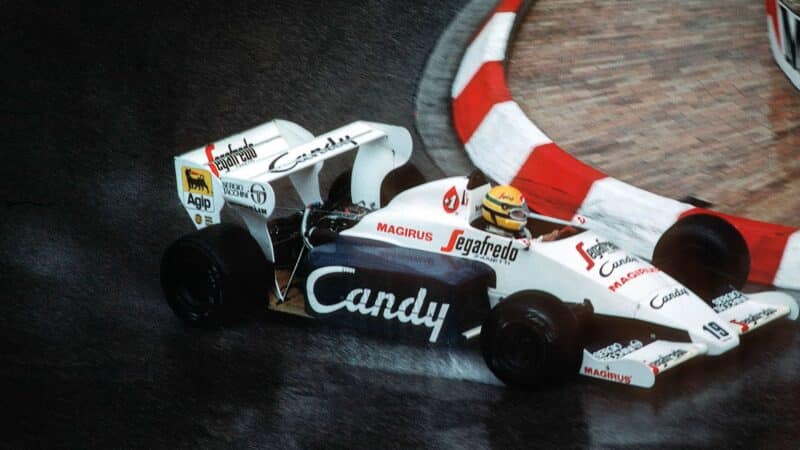
Ayrton Senna’s first podium came at the 1984 Monaco GP – when Toleman was robbed
Getty Images
“It was something extra special, his ability to remember minute details for feedback. Rory just said to Alex: ‘You’ve got to do everything you can to sign this guy.’”
“I’d been following him since karting,” adds Hawkridge. “We knew that he was super-quick. There was no surprise with his speed [but] his competitiveness was unbelievable. He just couldn’t come second. I’d never seen that intensity before in a driver.”
The car Senna was presented with to both test and make his F1 debut is the one Gasly drives today. However, the design is from the 1983 season, and was used to tide over the Brazilian and team-mate Johnny Cecotto until the new TG184 was ready for round five – the French Grand Prix.
“Gasly is immediately comfortable with a car built 13 years before he was born”
While its successor was a more considered concept, the TG183B was a last-minute effort conjured up by Byrne and co under high-pressure circumstances. It went through the same crisis-management that most other teams faced at the start of ’83 – the FIA banned ground effect on the eve of the season, meaning all participants had to come up with a new design overnight.
With its quirky features such as a radiator located in the front wing, aggressive floor aero down the side of the car and double rear wing structure, the TG183B was one of the most creative solutions to the conundrum.
“We produced a ground-effect car at the end of ’82 called TG183 which was going to be our car for the following year – it raced at Monza and Las Vegas [in ’82] – which had sliding skirts and everything,” explains Witty.
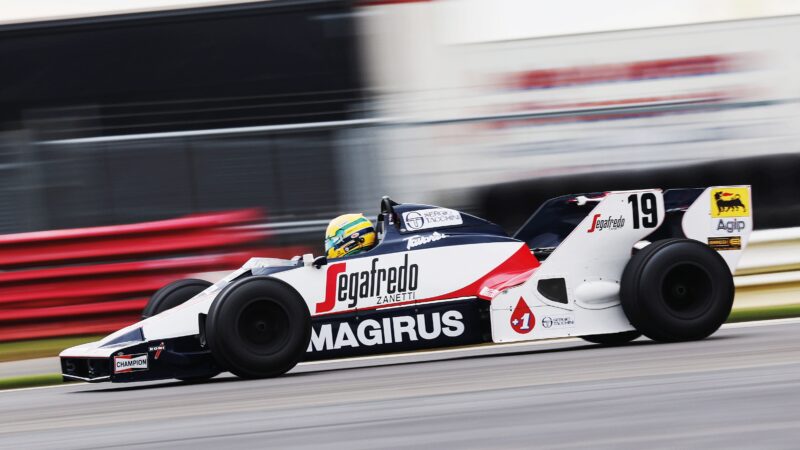
Shades of ’84 as Gasly channels the spirit of Senna for the Sky cameras
Jakob Ebrey
“Pat, Rory and John had done some really nice work with the 183 – it had a pointed nose, with a little radiator inlet at the front – and then they had to redesign the car.
“It was just downforce, downforce, downforce and because its Hart engine was an aluminium monobloc design, it needed a lot of cooling.”
The aggressive approach to aerodynamics is stark as the car sits in the old Silverstone pits, giving off a menacing air – not that it would intimidate the old hand Brundle, who looks on the car of his ’80s nemesis Senna with slightly misty eyes.
“It’s just a big Formula Ford car really, isn’t it?” he says. “And seeing that helmet design with that livery is a bit eerie…”
Looking the part, Gasly is now ready for his first run. The Brian Hart 1.5-litre turbo sounds pitch perfect, and the Frenchman wastes no time in getting up to speed.

It’s a cool 9°C as Gasly runs on grooved tyres, but the GP winner appears immediately comfortably with a car built 13 years before he was born. It harrumphs down the straight before the driver launches into Copse with full enthusiasm, clearly making use of an increased sightline with no halo, cumbersome wheel covers or extra-large tyres in the way – he can actually see the apex!
The clear joy from behind the wheel is almost immediately transmitted to the small crowd on the pitwall, all suitably thrilled by seeing such a visceral machine in action up close. Forget the fact Gasly hasn’t used an H-pattern gearshift in a racing car before, or isn’t supported by all the usual electronics, he hasn’t ever driven a vintage competition prototype of any kind at all. And yet he doesn’t miss a beat. Once out of the car following that first blast, the Frenchman is positively bouncing.
“It’s just exceeded my expectations – it’s my first ever time running in a car that was built before I was even born,” he enthuses. “It’s obviously a piece of history, just seeing how different it is to what I’m used to. No dash on the steering, just plain, so pure – gearstick, steering, clutch, brake, throttle, and that’s it! I just love the raw driving, no buttons, not looking at the dash – you’re just there, yourself and the track. It gave me a feeling which I’ve never experienced before.”
Despite the quirky aero solutions, 183B is an F1 design from a more unreconstructed racing age, and Gasly reveals that getting to grips with the 800bhp rocket in the back is one of the trickiest aspects.
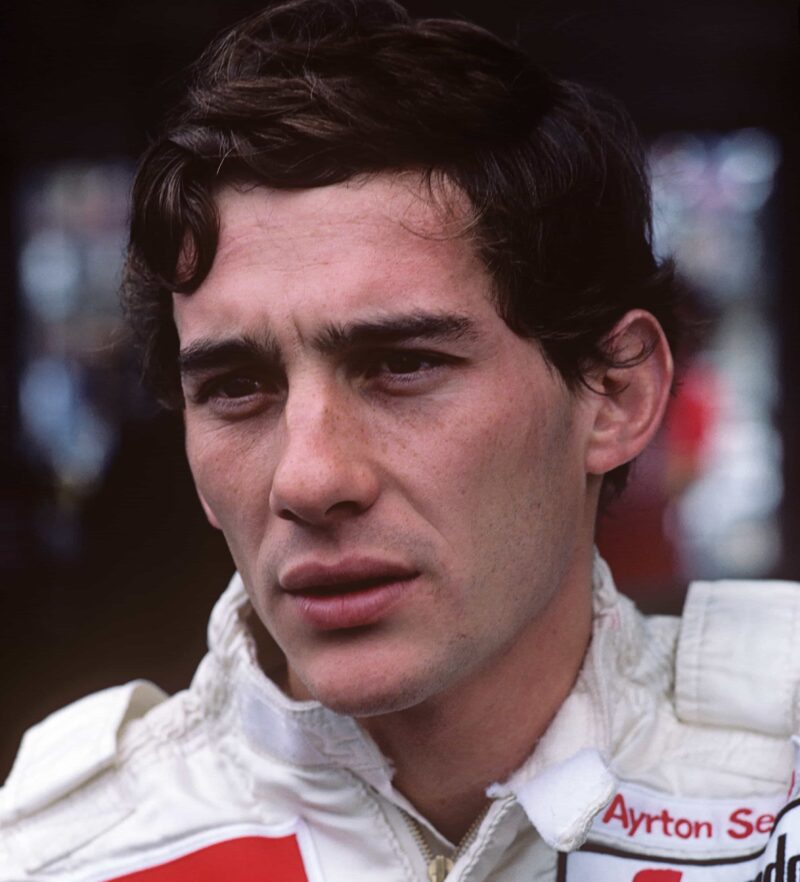
Senna in ’84
Getty Images
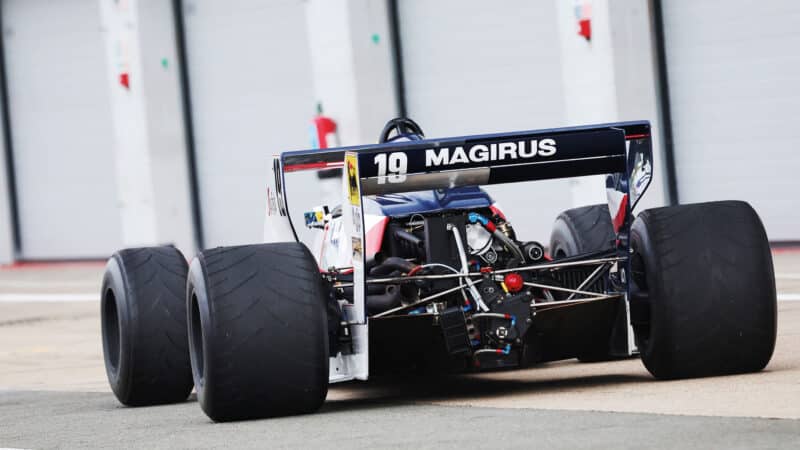
The Brazilian raced No19 for his first F1 season
Jakob Ebrey
“The turbo was quite particular in the way it kicks in,” he comments on a car which weighs in at just 540kg – a third less than his own modern-day Alpine. “I’ve always been used to paddle shifts. Using an H-pattern is very unusual for me. With the clutch, the way the car behaves in relation to the gearshifts is also quite different.”
Schiff, who also tries out the car, concurs: “You’ve got to really throw it into the downshifts. It’s a long time since I’ve done heel-and-toe!”
Would Gasly like to have been racing in the ’80s era of fire-breathing turbos among heroes like Senna, Alain Prost and Nigel Mansell? He concedes the TG183B might have had a profound effect on his thinking.
“I’m not gonna lie, I wasn’t ever really attracted by classic old cars,” he says. “I’m very into all the latest [road-going] hypercars. However, this experience made me feel something unique. In my generation, any time I’ve jumped in a car I’ve never really thought about safety – even if sometimes it’s thrown right in your face with some tragic events. Generally these days things are safer.
“I was thinking these last few days about driving in this car. Back then the safety was different. You respect the machine even more. I was pushing, getting closer to the limit – but then you have this sense of [the relative] safety [or lack of] which comes to the back of your mind.”
The emotion is clear for Gasly in emulating Senna in some small way – so why did he gravitate towards the Brazilian and not French hero Alain Prost?
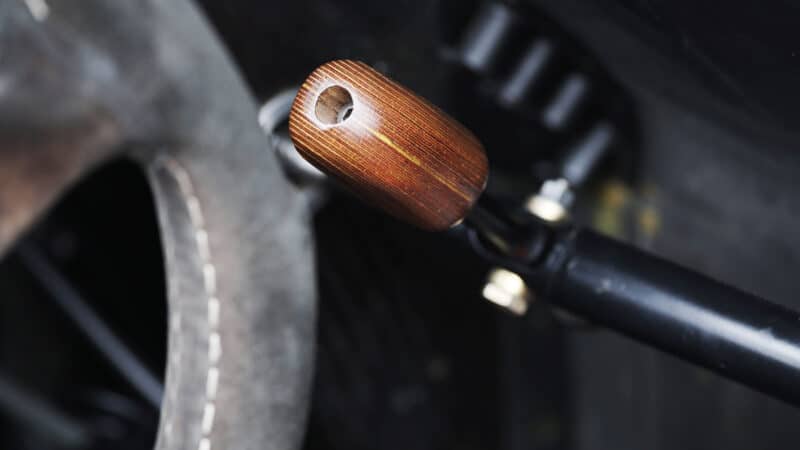
Pierre, you have some work to do
Jakob Ebrey
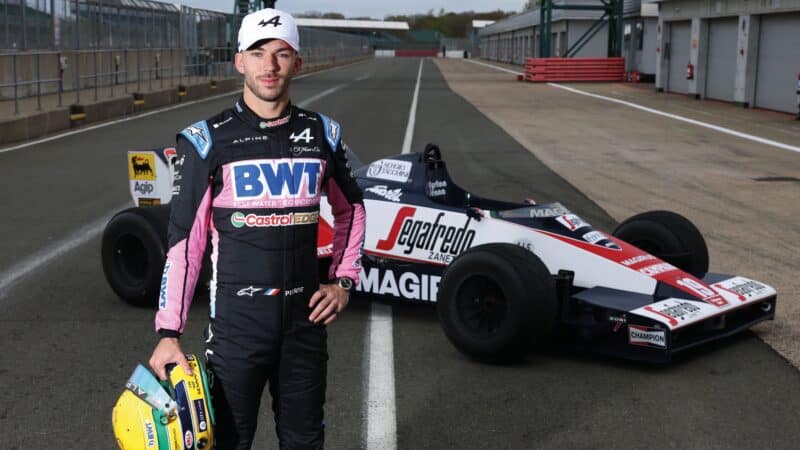
No Pierre, you can’t swap this Toleman for your Alpine for the rest of the F1 season…
Jakob Ebrey
“Obviously, Alain Prost is one of the most successful F1 drivers of all time, and in France, of course, he’s a legend,” acknowledges Gasly. “His and Ayrton’s rivalry is probably the most iconic in F1 – whenever you’d hear about Alain, Ayrton’s name would usually be mentioned.
“I started to watch documentaries and learn more about Ayrton. I really like the personality you had inside the car, but also outside it: his values, his beliefs and what he was giving back to his community in Brazil. You could see how huge he was and how many people were impacted by the accident in Imola. You still see it now around the world at race tracks, people screaming his name. He was more than just an F1 driver.”
It also isn’t lost on Gasly that he is now driving for a team whose lineage – via Renault, Lotus and Benetton – owes itself to Toleman. It’s essentially the same team at which Senna started his career. A handful of people who were there at the start in the early ’80s are still working at Enstone today.
“You think about it, the legacy is really, really cool,” Gasly says. “There are some original Toleman people here today, it’s crazy – I’m working with team members that actually worked on Ayrton’s car 40 years ago! It’s a lot of history.”
Senna was nothing less than a whirlwind in the TG183B. After helping Witty get the F1 car resprayed in the Rio favelas following a late promotion of Segafredo to title sponsor, the young charge would haul the car as high as 13th on his debut before the turbo let go.
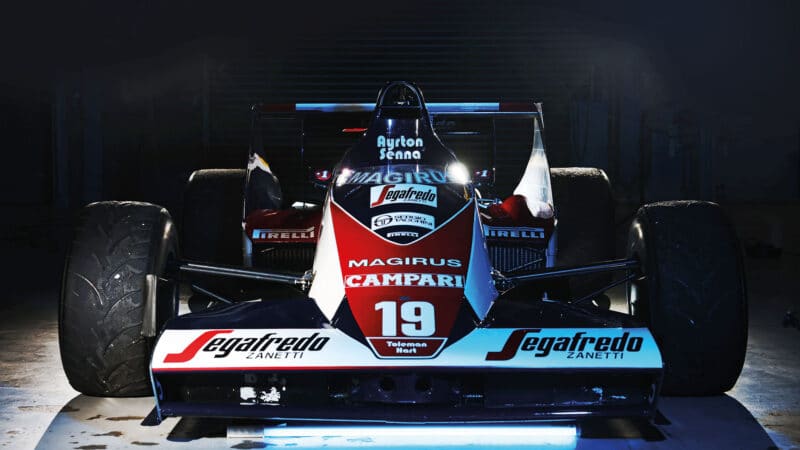
Chassis 05 is the actual car Senna raced.
Jakob Ebrey
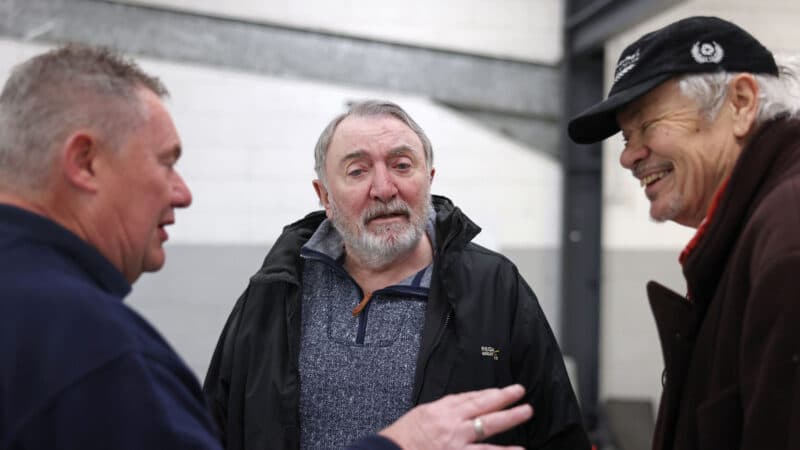
Barney Drew-Smythe, Alex Hawkridge and Chris Witty
Jakob Ebrey
However, there was improvement in the following two rounds at Kyalami and Zolder. In South Africa, Senna scored a point through what Witty describes as “sheer bloody mindedness” after his front wing was smashed to pieces on lap one, and he was promoted into the points in Belgium after Tyrrell was later thrown out of the world championship – retroactively disqualified due to its trick water refilling system.
Senna would then fail to qualify – for the only time in his F1 career – at the San Marino Grand Prix after a deluge soaked Imola, but he was undeterred.
“I really like the personality you had in the car, but also outside it”
Next would come the TG184’s arrival in Dijon, the famous Monaco podium, his departure for Lotus and everything else. But it all started with the Toleman TG183B.
For Hawkridge and Witty, 40 years on from that landmark season with Senna, the car represents both the start – and end – of something special, with Toleman lasting just one more year before selling to Benetton.
“I’d achieved everything I wanted to do in F1,” says Hawkridge. “We never won a race – but we did. We were ‘winning’ Monaco ’84 [when Senna was bearing down on Prost], and they red-flagged it. It was a stitch-up, and I lost my appetite.”

Team Toleman would taste title glory in future incarnations, and with some of the original figures involved with the TG183B. As Witty concludes: “It was just a great, great team with some great, great people.”In what will be the biggest demonstration parade and display of Ayrton Senna competition cars ever seen, the Toleman TG183B and many more of the Brazilian’s racing machines, including McLarens, Lotuses and pre-F1 cars, will run at this year’s Silverstone Festival (August 23-25) to mark the 30th anniversary of his death and 40 years since his arrival in F1. For ticket information visit silverstone.co.uk
